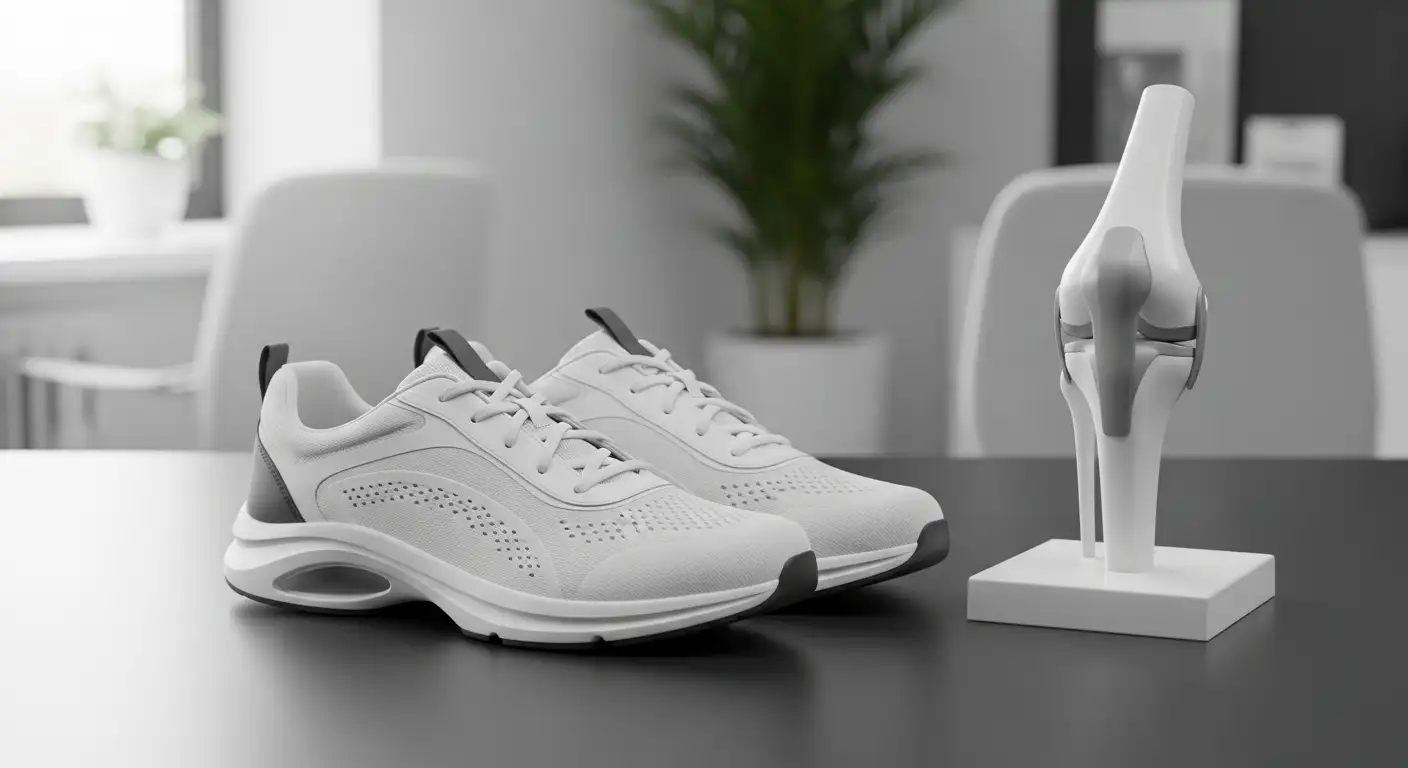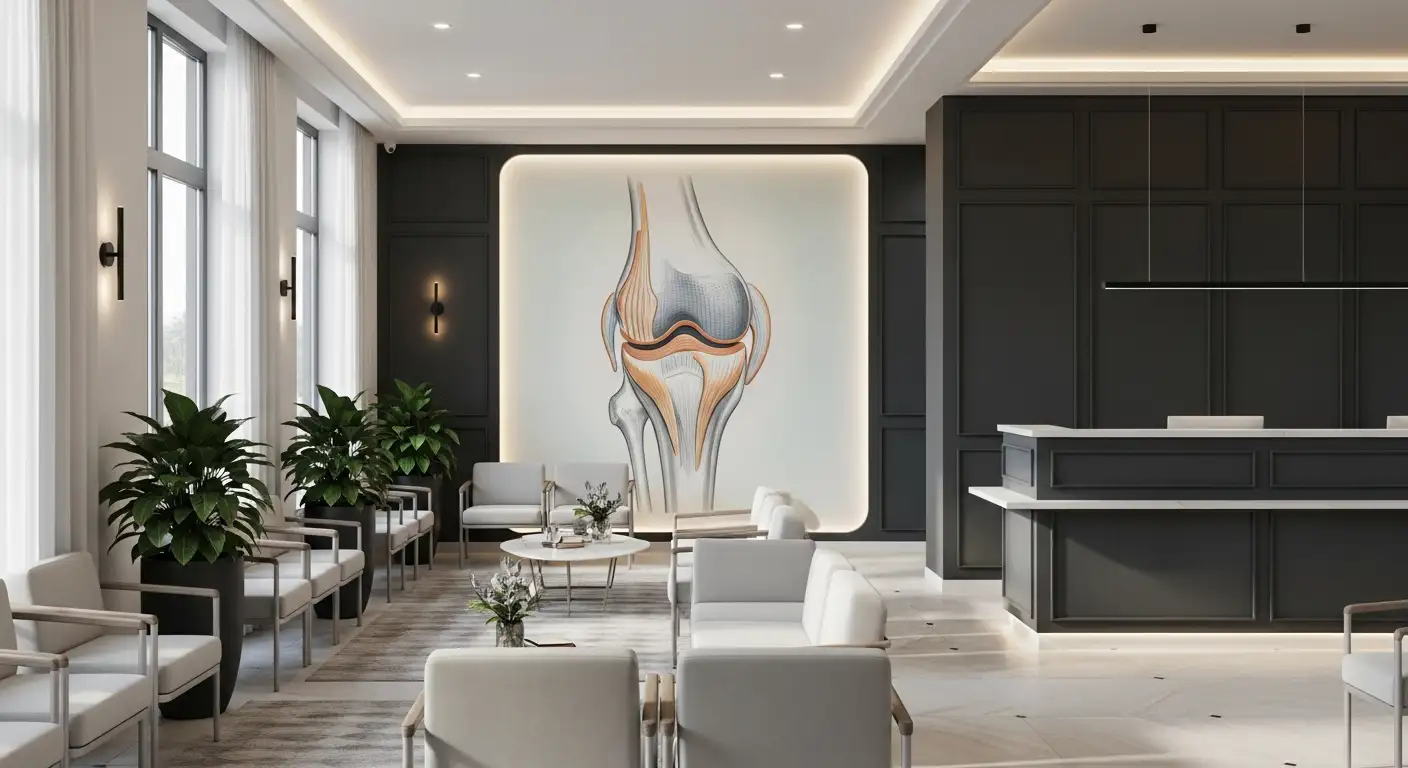Understanding Sharp Knee Pain
Sharp knee pain when kneeling can be both alarming and debilitating. It is a common symptom that can be caused by a variety of underlying conditions. Understanding the possible causes of knee pain and the risk factors associated with them is crucial for effective management and treatment.
Possible Causes of Knee Pain
There are several possible causes of sharp knee pain when kneeling. These could include injuries like a torn meniscus, patellar tendinitis, or bursitis. Conditions such as osteoarthritis or gout can also result in sharp knee pain when kneeling.
Other conditions that can cause this type of pain include patellofemoral pain syndrome (PFPS), which is common in young adults and can be due to overuse, muscle imbalance, or misalignment of the kneecap.

Furthermore, an injury to the anterior cruciate ligament (ACL) can also cause sharp knee pain when kneeling. Prepatellar bursitis, or inflammation of the small fluid-filled sacs that cushion the outside of the knee joint, can cause sharp pain when kneeling [3].
Sharp knee pain can also occur due to iliotibial band syndrome, which is when the band of tissue that extends from the outside of your hip to the outside of your knee becomes tight or inflamed. Patellar tendinitis, or inflammation of the tissues connecting the kneecap to the shinbone, can also lead to sharp knee pain when kneeling.
In younger individuals, Osgood-Schlatter disease, which typically occurs in children or adolescents experiencing growth spurts, might cause sharp knee pain during kneeling.
Risk Factors for Knee Pain
Several factors can increase the risk of experiencing knee pain when kneeling. These include age, obesity, genetics, and previous knee injuries [1].
Age is a significant risk factor, as the likelihood of developing conditions like osteoarthritis increases with age. Obesity puts additional stress on the knee joints, which can lead to pain. Genetic factors may also predispose some people to conditions like gout or rheumatoid arthritis. Finally, having a previous knee injury can make one more susceptible to knee pain.
Understanding the causes and risk factors of sharp knee pain when kneeling is the first step towards finding the most effective treatment. It is advisable to consult with a healthcare provider for a comprehensive diagnosis and treatment plan.
Diagnosing Sharp Knee Pain
The process of diagnosing sharp knee pain involves a series of steps, starting with a physical examination and often followed by imaging studies. These steps are crucial for identifying the underlying cause of the sharp knee pain when kneeling and for developing an appropriate treatment plan Medical News Today.
Role of Physical Examination
The initial diagnosis of sharp knee pain typically involves a physical examination conducted by a healthcare professional, such as a physiotherapist or sports doctor. During the examination, they will assess the knee's flexibility, strength, and stability. They may also ask the individual to walk, sit, stand, or carry out other movements to evaluate the knee's function and look for signs of discomfort or pain.
The healthcare professional will also inquire about the individual's medical history, the nature of the pain, the specific activities that seem to trigger it, and any previous injuries or surgeries. This information is crucial in helping to identify potential causes and formulate a tailored treatment plan One Body LDN.
Importance of Imaging Studies
In some cases, a physical examination alone may not be sufficient to diagnose the cause of knee pain. In such scenarios, healthcare professionals may recommend imaging studies for a more detailed view of the knee's structure. These could include X-rays, CT scans, MRI scans, or ultrasound, depending on the suspected cause of the pain.
Imaging studies provide a more in-depth look at the knee's bones, ligaments, tendons, and cartilage, helping to identify any abnormalities or damage that could be causing the pain. They can reveal conditions like fractures, ligament tears, cartilage damage, and arthritis, which may not be detectable through a physical examination alone Mayo Clinic.
If conservative treatments like physical therapy and medications do not alleviate the knee pain when kneeling, consulting with a healthcare provider or orthopedic specialist for further evaluation and personalized treatment options is recommended Mayo Clinic.
Remember, certain instances of knee pain may require immediate medical attention. This includes instances of sudden or sharp knee pain without recent strenuous activity, knee pain affecting mobility, clicking or popping in the knee, knee buckling, or in cases where conservative methods like rest, icing, or pain medications are ineffective Hospital for Special Surgery.
Common Conditions Causing Knee Pain
There are several conditions that may result in sharp knee pain when kneeling. These include a meniscus tear, patellar tendinitis, bursitis, and osteoarthritis. Each condition has its own set of symptoms and potential treatment options.
Meniscus Tear
A meniscus tear is one possible cause of sharp knee pain when kneeling. The meniscus is a piece of cartilage that provides a cushion between your thighbone and shinbone. When it tears, it can cause pain, swelling, stiffness, or even a locking sensation in the knee joint. This condition often requires urgent medical attention for diagnosis and treatment [4].
Patellar Tendinitis
Patellar tendinitis, also known as jumper's knee, is a condition characterized by inflammation in the tendon that connects the kneecap (patella) to the shinbone. This inflammation can cause sharp knee pain when kneeling, especially during activities that involve jumping or sudden changes in direction. In many cases, patellar tendinitis can be managed with rest, ice, compression, elevation, and physical therapy.
Bursitis
Bursitis is another condition that can lead to sharp knee pain when kneeling. In this condition, the bursae, small fluid-filled sacs that cushion the outside of your knee joint, become inflamed. This inflammation can cause pain and swelling, and it's often the result of repetitive kneeling or overuse of the knee joint. Initial treatment for bursitis often involves rest and over-the-counter pain relievers, but in severe cases, medical intervention may be necessary.
Osteoarthritis
Osteoarthritis is a degenerative joint disease that can cause knee pain, especially when kneeling. This condition occurs when the cartilage that cushions the ends of your bones wears down over time. Osteoarthritis can cause pain, stiffness, and loss of flexibility in the knee joint. While there's no cure for osteoarthritis, treatments are available that can help manage symptoms and improve quality of life.
Understanding the potential causes of sharp knee pain when kneeling can help guide treatment and prevention strategies. If you're experiencing this type of pain, it's important to seek medical attention to determine the underlying cause and begin appropriate treatment.
Treatment Options for Knee Pain
Managing sharp knee pain when kneeling requires a comprehensive approach that includes therapies, exercises, and medications. The choice of treatment depends on the severity of the pain and the underlying cause.
RICE Therapy
RICE (Rest, Ice, Compression, Elevation) therapy is often a go-to treatment for mild cases of knee pain when kneeling. It involves rest, applying ice to the affected knee, compressing the knee with a bandage, and elevating the knee above heart level. This approach can help manage pain, reduce swelling, and promote healing.
Rest and avoiding activities that exacerbate knee pain are essential for allowing the knee to heal. It is advisable to use ice, compression, and elevation techniques to help manage pain and swelling associated with knee issues [5].
Physical Therapy
Physical therapy exercises can be beneficial in strengthening the muscles around the knee to help alleviate knee pain when kneeling. These exercises may include stretching, strengthening, and stability exercises.
Physical therapy may be recommended for individuals experiencing sharp knee pain when kneeling due to arthritis or injury. Physical therapists can teach exercises to strengthen the muscles around the knee, improving stability and reducing pain [6].
Medications for Pain Management
In addition to RICE therapy and physical therapy, medications can also help manage sharp knee pain when kneeling. Over-the-counter pain relievers, such as nonsteroidal anti-inflammatory drugs (NSAIDs) or acetaminophen, can provide relief. In more severe cases, a healthcare provider may prescribe stronger pain relievers.
Remember, the right course of treatment depends on the cause and severity of the knee pain. Therefore, it's important to seek medical advice to ensure appropriate treatment for knee pain [6].
Preventive Measures and Lifestyle Modifications
To prevent sharp knee pain when kneeling, certain lifestyle modifications and preventive measures can be beneficial. These include regular exercise and maintaining a healthy weight.

Role of Regular Exercise
Regular exercise, especially those that strengthen the muscles around the knee, can help alleviate knee pain when kneeling. Strengthening exercises for the quadriceps and hamstrings can notably reduce knee pain and improve knee function, including when kneeling [2].
Exercises such as straight leg raises, wall sits, knee extensions, hamstring curls, and step-ups can be beneficial for reducing knee pain and improving strength to prevent sharp knee pain when kneeling.
In addition to these strengthening exercises, stretching can aid in addressing muscular imbalances involved in knee pain by improving strength and flexibility. For example, stretching can help resolve knee pain caused by inactivity, such as tight hamstrings from excessive sitting.
Physical therapy exercises, including stretching, strengthening, and stability exercises, have also proven beneficial in strengthening the muscles around the knee and thereby helping to alleviate knee pain when kneeling [5].
Importance of Healthy Weight
Maintaining a healthy weight is crucial in preventing sharp knee pain when kneeling. Excess weight can put additional stress on the knees, which can worsen knee pain. By maintaining a healthy weight, you can reduce this stress and potentially prevent knee pain.
In addition to regular exercise and maintaining a healthy weight, it's also important to take safety measures during physical activities. These recommendations include warming up before exercise and using proper footwear, which can further help prevent knee pain.
By incorporating these preventive measures and lifestyle modifications, individuals can effectively manage and reduce the risk of experiencing sharp knee pain when kneeling.
When to Seek Medical Help
Experiencing sharp knee pain when kneeling can be a worrying experience. Understanding when to seek medical help is crucial for ensuring proper care and recovery.
Signs and Symptoms Requiring Attention
Sharp knee pain when kneeling can indicate various underlying conditions, some of which may require immediate medical attention. According to the Mayo Clinic, signs and symptoms that necessitate urgent medical attention include:
- Severe pain
- Swelling
- Redness
- Tenderness and warmth around the joint
- Difficulty bearing weight on the knee
- Noticeable knee deformity
- Fever, in addition to redness, pain, and swelling
In particular, sharp knee pain when kneeling could be a sign of a meniscus tear, which could cause swelling, stiffness, or locking of the knee joint. This condition may necessitate urgent medical attention for diagnosis and treatment.
Importance of Early Diagnosis and Treatment
Seeking a diagnosis from a healthcare professional is essential for identifying the underlying cause of knee pain when kneeling and developing an appropriate treatment plan.
Early diagnosis enables the implementation of effective treatment strategies, which might include physical therapy, medications, or in more severe cases, surgery. The Cleveland Clinic suggests that knee arthroscopy, a minimally invasive procedure, is commonly performed to repair damage inside the knee joint. Total or partial knee replacement may be recommended for severe arthritis or irreparable damage.
To effectively address and manage sharp knee pain when kneeling, it is essential to consult with a healthcare professional, such as a physiotherapist or sports doctor, for a comprehensive assessment, accurate diagnosis, and tailored treatment plan.
If conservative treatments like physical therapy and medications do not alleviate knee pain when kneeling, consulting with a healthcare provider or orthopedic specialist for further evaluation and personalized treatment options is recommended [5].
By seeking medical help promptly, you can avoid additional complications and progress towards a quicker recovery.
References
[1]: https://www.medicalnewstoday.com/articles/knee-pain-when-kneeling
[2]: https://www.healthline.com/health/exercises-for-knee-pain
[3]: https://www.mayoclinic.org/diseases-conditions/knee-pain/symptoms-causes/syc-20350849
[4]: https://www.mayoclinic.org/symptoms/knee-pain/basics/when-to-see-doctor/sym-20050688
[5]: https://www.mayoclinic.org/diseases-conditions/knee-pain/diagnosis-treatment/drc-20350855
[6]: https://my.clevelandclinic.org/health/symptoms/21207-knee-pain
[7]: https://www.hss.edu/article_stretches-exercises-knee-pain.asp
[8]: https://onebodyldn.com/uncategorized/sharp-needle-like-pain-in-the-knee-when-kneeling/





